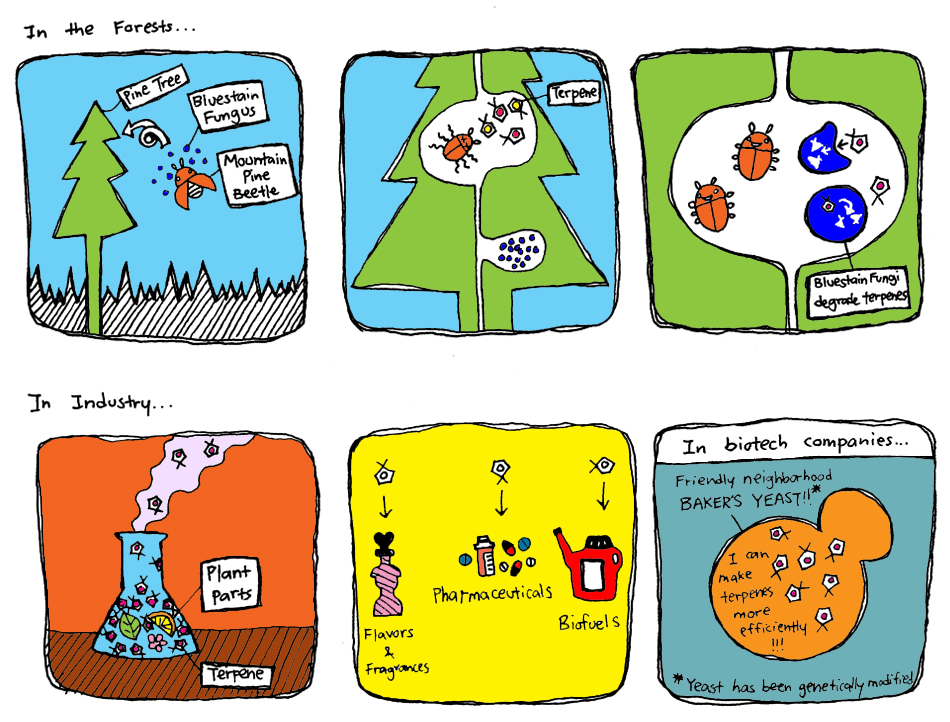Team:British Columbia/Abstract
From 2011.igem.org
(Difference between revisions)
| Line 7: | Line 7: | ||
<html><h3><center>Abstract</h3></center></html> | <html><h3><center>Abstract</h3></center></html> | ||
| - | In nature, monoterpenes are synthesized and secreted by trees as a defense against invading beetles and fungi. The bluestain fungus and mountain pine beetle are in a symbiotic relationship where the fungus deactivates toxic terpenoids and enables the survival of the beetle, which in turn facilitates the spread of the fungus from tree to tree. Meanwhile, from an industrial point of view, various monoterpenes are involved in the production of pharmaceuticals, flavours/fragrances and biofuels. The 2011 UBC iGEM team aims to optimize production of terpenes in Saccharomyces cerevisiae yeast by constructing the biosynthetic pathways necessary to synthesize | + | In nature, monoterpenes are synthesized and secreted by trees as a defense against invading beetles and fungi. The bluestain fungus and mountain pine beetle are in a symbiotic relationship where the fungus deactivates toxic terpenoids and enables the survival of the beetle, which in turn facilitates the spread of the fungus from tree to tree. Meanwhile, from an industrial point of view, various monoterpenes are involved in the production of pharmaceuticals, flavours/fragrances and biofuels. The 2011 UBC iGEM team aims to optimize production of terpenes in Saccharomyces cerevisiae yeast by constructing the biosynthetic pathways necessary to synthesize these compounds. To simulate the system, we are developing models of (i) monoterpene synthase structure, (ii) monoterpene production in yeast and (iii) the dynamics of the mountain pine beetle populations in British Columbia under the influence of our synthetic yeast. A new human practices approach we have pursued this year involves interviewing experts across various fields to obtain their opinions on the release of synthetic organisms into the wild. |
Revision as of 02:10, 17 October 2011

 "
"
